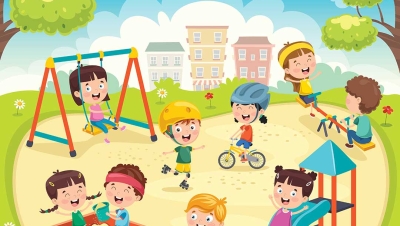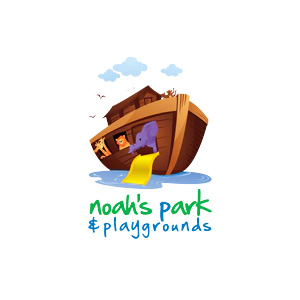Working in the Playground Industry has its Rewards
Building playgrounds and constructing playground equipment is a satisfying undertaking. For those of us who install playgrounds professionally, watching the children who finally get cut loose to play on their new equipment, is the most gratifying moment of the entire process and often serves as its own reward.
To all involved in playground projects, you are to be commended. Besides installers, others involved in a playground project include architects, designers, manufacturers and sales representatives.
Landscape architects design parks, of which playgrounds are a big part. Architects prepare a blueprint that shows all aspects of a park, such as buildings, landscaping, sidewalks and site amenities. Architects are responsible for visualizing and designing a playground that complements the park and its surroundings.
Designers may work for the playground manufacturer directly or with sales or consulting firm. It is the designer's job to devise a play area that fits the needs of the customer and the architect. Designers prepare a top view and three-dimensional drawing for the playground area to assist the customer in visualizing the final product. Designers are responsible for providing play areas that have "play value" to the playground owner.
Manufacturers produce and distribute playground products. Manufacturers provide fresh, fun, safe, and marketable playground equipment. This job, although exciting, is becoming increasingly tough because of the safety guidelines and laws governing today's playground market.
Manufacturers also employ welders, painters and assembly workers. These people cut, fabricate, weld, clean, paint, package, ship and service playground equipment. A visit to a modern playground equipment factory is fun and sheds new light on the entire process. It is the responsibility of the manufacturer to provide safe, durable, attractive and fun playground equipment.
Sales representatives are the people responsible for bringing playground information to the playground owners. It is their job to help the consumer choose the kinds of components and colors to pick. Sales representatives must be knowledgeable about equipment heights, ADA accessibility requirements, safety surfacing and other particulars to arrive at a decision about what equipment to recommend. Sales representatives must be knowledgeable about all requirements of today's playgrounds and assist in purchasing decisions to fund their project.
The last group of people involved in a playground project before the children take charge are the playground installers. Even beyond the happy faces on the children at play, building playgrounds is rewarding. Playground builders get to work outside in park-like settings most of the time. It is good for the body and soul. They move from job to job quickly and at the end of the day, they get to stand back and see the tangible result of the day's work. It gives a sense of accomplishment.
Playground construction is physically hard work and most installers do not need to go to the gym to work out after hours.
The best part of building a playground is realized when the construction is finished, cement is poured, and inspections are complete. When the neighborhood takes control of its new play toys, children's laughter and excitement fill the park. The efforts of many provide the final product, and the builder gets to see and enjoy the end result.




















Add new comment